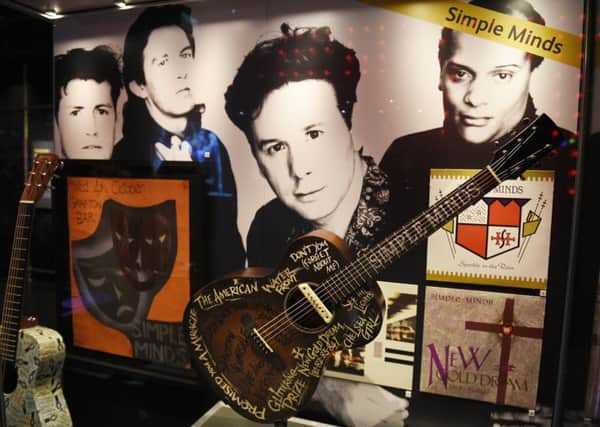Exhibition review: Rip It Up, National Museum of Scotland, Edinburgh


Clearly a labour of love, Rip It Up – named in honour of the cherished ‘80s Orange Juice hit – is a teeming treasure trove of instruments, costumes, annotated photographs, records, posters and countless rare artefacts.
Music and videos are on constant rotation, but thanks to a carefully orchestrated sound mix they never clash. An exhibition of this nature could easily descend into sensory overload, but it’s not an overbearing experience at all. It’s a pleasurable mosaic of sound and vision, full of energy and charm.
Advertisement
Hide AdOnce you pass a bank of screens broadcasting celebratory soundbites from various luminaries, the first thing you encounter is a large monochrome frieze of Scotpop’s founding father Lonnie Donegan. A beautiful Dansette record player spinning an original copy of his Rock Island Line EP provides appropriate period flavour.
Next stop, the sweaty dance halls of the late ‘50s and early ‘60s, where Scottish youth culture was born. The Beat Boom is represented by memorabilia relating to The Poets, also-rans who should’ve been contenders. This exhibition is commendably democratic: it gives practically everyone their due. Barbara Dickson deserves her glass case exhibit just as much as the more credible likes of, say, Primal Scream.
A striking green trouser suit worn by Lulu in 1968 opens up a wardrobe that also includes Alex Harvey’s famous striped shirt, Associates singer Billy Mackenzie’s beret, the raincoat worn by Midge Ure in the Vienna video, the Elvis-style black leather suit modelled by Sharleen Spiteri in the video for Texas’ Inner Smile, and the tartan suit worn by Annie Lennox during her ‘80s Eurythmics pomp.
A drooling dream come true for axe fetishists, Rip It Up also boasts Jack Bruce’s Aria bass, one of only two ever produced, a guitar, hand-painted by artist John Byrne, on which Gerry Rafferty wrote Stuck in the Middle With You, and the guitar that Biffy Clyro’s Simon Neil set on fire at the end of their Reading Festival performance in 2013. No less impressive are Sarah Martin from Belle and Sebastian’s recorder and a toy clarinet favoured by The Pastels.
An imposing Robbie the Robot-shaped Chantal Meteor jukebox allows visitors to listen, via headphones, to an eclectic array of ‘60s/‘70s singles. Familiar hits such as Donovan’s Sunshine Superman rub shoulders with fantastic obscurities like I Don’t Want You by Freakbeat band The Anteeks.
Vividly psychedelic posters advertising concerts by The Incredible String Band give way to the DIY iconography of the punk and post-punk eras. Seminal independent labels such as Edinburgh’s Fast Records and Glasgow’s Postcard Records are represented by an industrious collection of minutiae, including a complimentary card written from David Bowie to Fast co-owner Bob Last in 1979.
Advertisement
Hide AdThe “Indie” room boasts perhaps my favourite exhibit: a pair of formidable brothel creepers belonging to Jesus & Mary Chain bassist Douglas Hart. Where else would you find such a niche piece of pop ephemera?
A skittering flash of disco lighting heralds the ‘90s, which saw the rise of dance music and the emergence of hugely successful clubs such as Glasgow’s Optimo.
Advertisement
Hide AdThe final stretch is proudly devoted to Scotland’s biggest heavy-hitters. This is where Simple Minds, Paolo Nutini, The Bay City Rollers, KT Tunstall and The Proclaimers reside.
The last face you see as you reach the exit is that of Frightened Rabbit singer Scott Hutchison, who recently took his own life. A poignant, subtle, respectful touch.
Indeed, the cumulative effect of this exhibition is surprisingly moving. It shows how a country as small as Scotland has somehow managed to produce a constant stream of great musicians over the last seven decades. It carries a tacitly socio-political undercurrent and speaks of something inherent in the national character: a desire to create art and communicate with the world via sincerity, irreverence and uncompromising fervour. It’s something to be proud of.